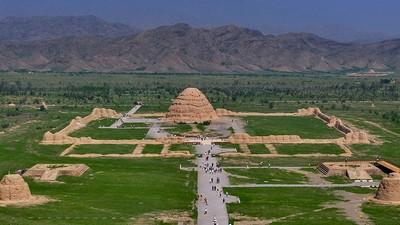
China’s Xixia imperial tombs inscribed as unesco world heritage site
China Economic Net
Paris: China’s Xixia Imperial Tombs Were Inscribed On The World Heritage List On Friday During UNESCO’s 47th Session Of The World Heritage Committee, Held In Paris, France.
With This Addition, The Total Number Of World Heritage Sites In China Has Reached 60.
Xixia Imperial Tombs Is A Group Of Imperial Burial Sites From The Xixia Dynasty (Western Xia, 1038-1227), Founded By The Tangut People In Northwestern China During The 11th To 13th Centuries.

Covering An Area Of Nearly 40 Square Km, The Site Comprises Four Types Of Architectural Remains: 9 Imperial Mausoleums, 271 Subordinate Tombs, A Northern Architectural Complex Covering 0.05 Square Km, And 32 Flood Control Works.
The Xixia Imperial Tombs Are The Largest, Highest-Ranked, And Most Intact Archaeological Site From The Xixia Period That Has Survived To The Present Day.
According To The World Heritage Committee, The Site Is A Testament To The Cultural Fusion And Interactions Of Diverse Traditions. It Also Bears Witness To The Unique Role Of The Xixia Dynasty In Cultural And Commercial Exchanges Along The Silk Roads During The 11th To 13th Centuries.
The Committee Commended The Efforts And Achievements Made By The Chinese Government In The Protection And Management Of The Cultural Heritage Of The Xixia Imperial Tombs.
Rao Quan, Vice Minister Of Culture And Tourism Of China, Said That China Will Remain Steadfast In Fulfilling Its Obligations Under The World Heritage Convention, Further Enhance Holistic And Systematic Protection Of Cultural And Natural Heritage, And Improve Conservation Capacity And Standards.
